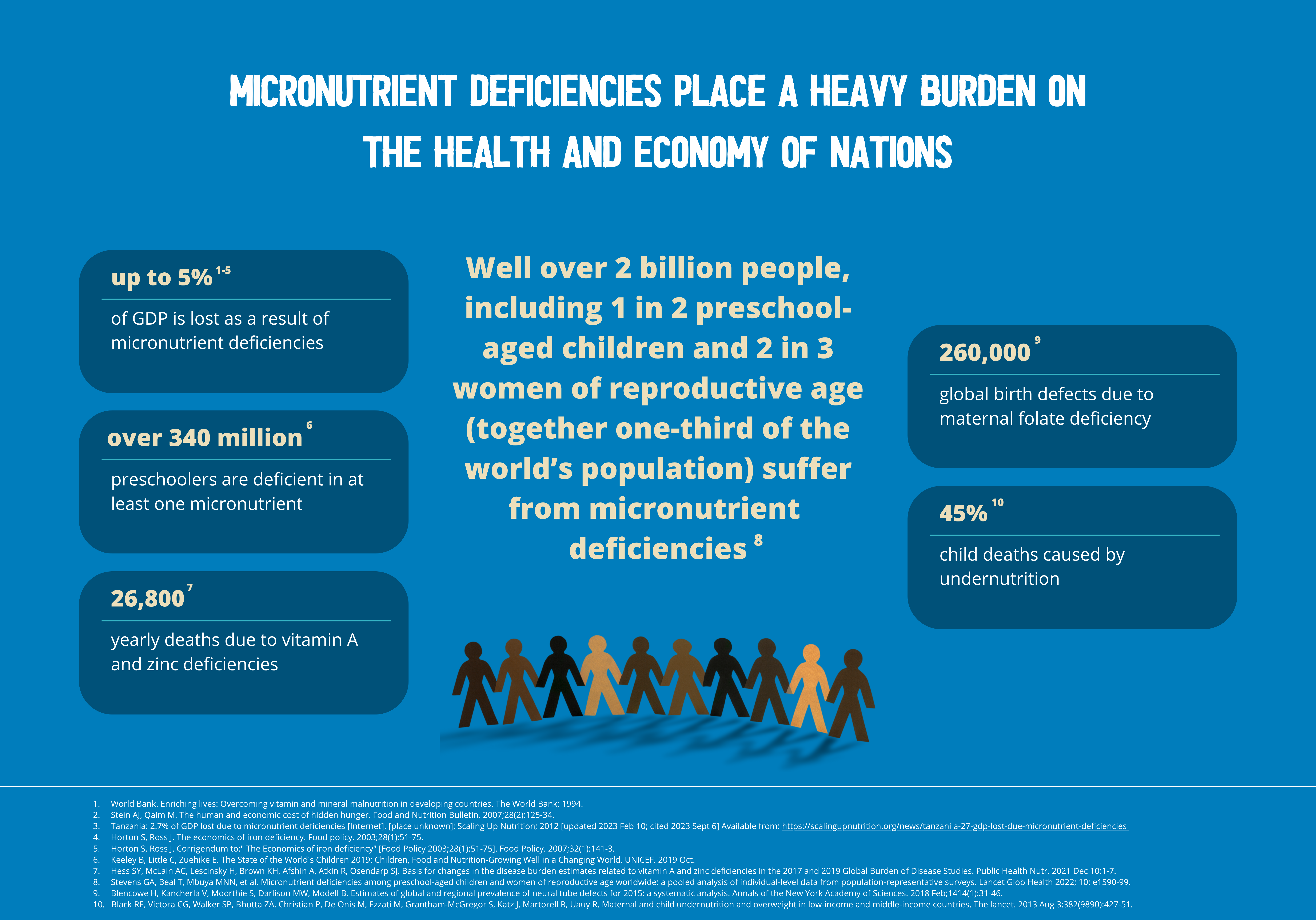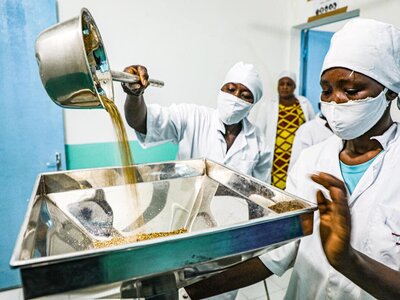Food fortification
- Over 2 billion
- people, including one in two pre-school-aged children and two in three women of reproductive age (together one-third of the world’s population) suffer from micronutrient deficiencies
- 1,478,081 metric tons
- of fortified foods were distributed in 2021 by WFP
- 60 countries
- have implemented national fortification programmes with WFP’s support
In the countries where the World Food Programme (WFP) works, many people do not have access to a healthy, nutritious diet that provides all the vitamins and minerals necessary for a healthy life. Food fortification - enhancing the micronutrient content of commonly eaten foods - provides a cost-effective and life-changing solution.
WFP is increasingly sourcing fortified foods to distribute in our food assistance programming, including general food distribution and school feeding, to reach millions of the world's most vulnerable. We also advocate for governments to adopt fortification policies and support national fortification programmes alongside social protection programmes to provide for those most in need.
Globally, well over 2 billion people are affected by micronutrient deficiencies, known as micronutrient malnutrition or ‘hidden hunger’, as their effects are often not clearly visible. Deficiencies of the essential vitamins and minerals the body needs to maintain optimal health and immunity can cause severe and even life-threatening conditions, contributing to increased maternal and child mortality, impaired immune function, and reduced cognitive and physical development and performance. Micronutrient deficiencies can lead to a loss of up to 4-5 percent of Gross Domestic Product.
The good news is that micronutrient malnutrition is preventable, and food fortification through post-harvest and bio fortification fortification has proven to be an effective strategy towards achieving a nutritious diet.

A solution for each country
-
Bangladesh: fortified rice in social safety nets & retail
-
Since 2013, Bangladesh has seen an increase from 30,000 to over 13 million people receiving fortified rice through social assistance programs. This has been achieved through WFP working with the Government of Bangladesh and rice millers to build local production capacity and strengthen the supply chain for fortified rice alongside capacity building activities to strengthen the network between producers, retailers and consumers of fortified rice. WFP continues to support the government while also providing technical assistance to more than 280 retailers in Dhaka and Sirajganj to bring fortified rice to the open market.
-
Peru: fortified rice in school feeding and beyond
-
Sudan: Building an enabling environment for fortification







